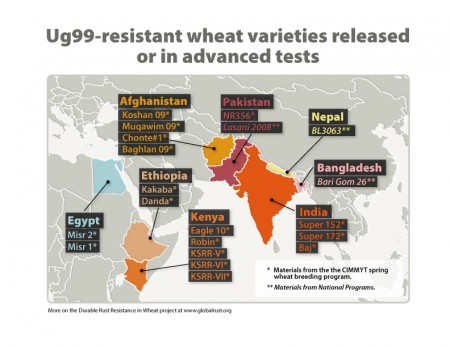- Australian magazine overdoses on FIGS (Focused Identification of Germplasm Strategy) h/t Dag.
- World Agroforestry Centre says malaria-cure trees are going extinct. World Malaria Day is on Monday 25th.
- New PhD programme on Biodiversity and Society. h/t CFTF, who say it covers diversification and neglected crops.
- China loves US pecans, giving Tom an opportunity for some strategic analysis.
Nibbles: Weeds, Maple, Striga, Wheat rust, Quinoa
- It’s that time again. National Public Radio eats weeds and other wild foods.
- It’s that time again. The complexity of Maple Syrups (but no mention of variety).
- It’s that time again. Mainstream media get hold of Striga control story.
- It’s that time again. Wheat fungus love from The New York Times to our friends at ICARDA.
- It’s that time again. Is quinoa kosher?
Nibbles: Wheat rust, Mill, Cassava
- A big-deal wheat rust conference started today at ICARDA in Aleppo, and there are various webby ways to keep in touch, like RSS (pointless?) and Twitter.
- Stop Press: Wheat rust presentations now on SlideShare.
- A windmill in south London. Jeremy says, “I hope it grinds slow, but exceeding fine.”
- Cassava!
UG99 resistant varieties
In case you’re not following the discussion here on knowledge management, here’s a map of the wheat varieties resistant to UG99.

If you use Google to search for images of “UG99 resistance” it is right up there, near the top, and several versions are available…
Biofortified foods rolled out across Latin America and the Caribbean
Agro-Salud, “a multi-partner ‘biofortification’ program,” has announced on the CIAT blog that it is releasing new varieties of rice, maize and beans to poor communities in Bolivia, Colombia, Honduras and Nicaragua. The new crops are described as “nutritionally enhanced” and also “out-perform traditional crops in terms of disease resistance and yields”.
The new varieties add to more than 40 nutritionally-improved crops that Agro Salud and its partners have released across the region since 2007.
I wonder if they have had any impact on nutrition?